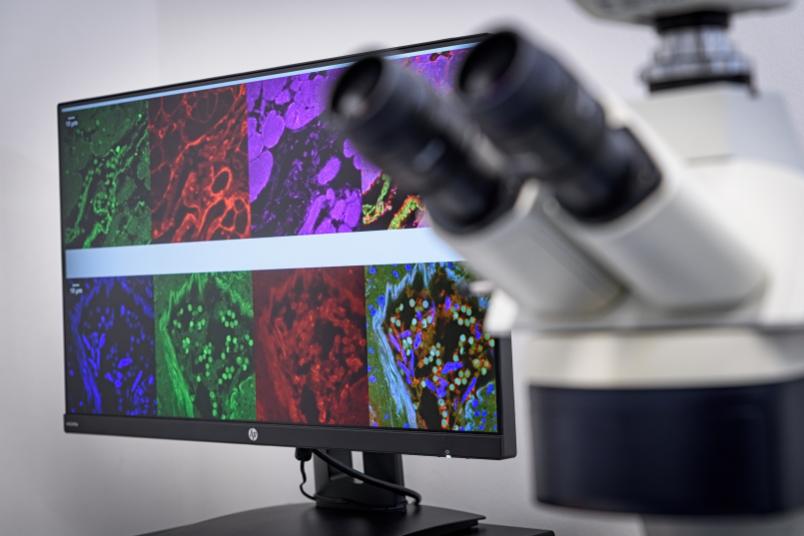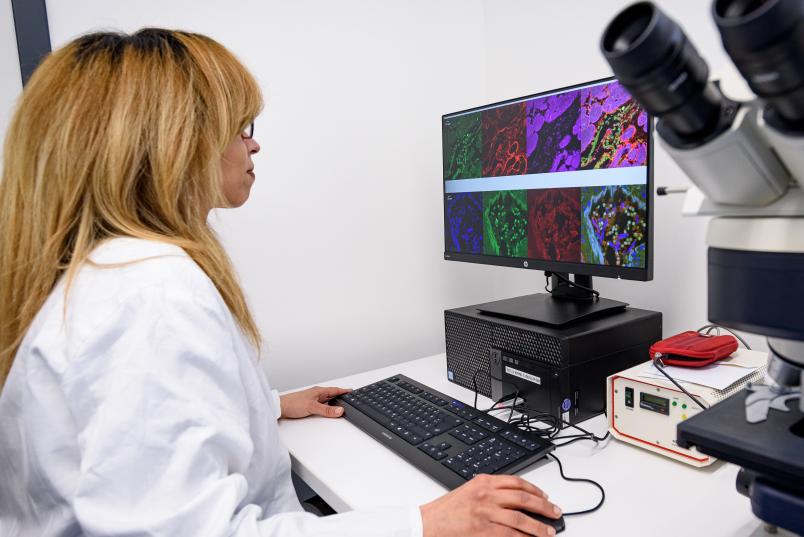
Cardiology
How the coronavirus attacks the heart
A research team at RUB has discovered the mechanisms by which the coronavirus enters the heart – and how it could be stopped.
The coronavirus Sars-Cov-2 can cause severe organ damage in humans. Heart complications are one of the possible consequences of a Covid-19 infection. For example, the severe acute respiratory syndrome triggered by coronavirus is usually accompanied by additional stress on the heart, especially in people with heart failure or other pre-existing cardiac conditions. In addition, the virus also enters the heart directly, can cause myocarditis and lead to heart failure. But how does the virus get into the heart? And how can it be stopped?
[einzelbild: 1]
Dr. Nazha Hamdani, head of the research department for molecular and experimental cardiology at the Bochum university hospital, has found the answers. The researcher has closely followed the journey of the virus into the heart and discovered a new entry and damage mechanism: the virus enters the heart cells with the help of so-called extracellular vesicles and exosomes, i.e. particles located outside the cell, and infects them. “Our study shows for the first time that there is another mechanism that the virus uses to enter the human heart through the bloodstream,” explains Hamdani.
In order to track down the new entry mechanism, the research team at the university hospital used histochemical methods and microscopy to analyse blood sera and heart tissue structures from patients suffering from Covid-19 and those who died from or with the disease.
Virus detected in heart cells
In a first step, Hamdani’s team provided evidence that the virus can indeed be detected directly in the cells of the heart muscle. “Our observations show that the virus exerts pressure on the heart muscle, attacks and weakens the contractile force, i.e. the pumping function of the heart,” says Hamdani.
[einzelbild: 2]
But how does the virus enter the heart in the first place? Previous studies into Sars-Cov-2 have shown that the novel virus binds to a specific surface molecule of the human cell, i.e. the angiotensin-converting enzyme 2 (ACE-2), via an enzyme called the spike protein, which is located on the outside of the viral envelope. “The virus penetrates into the cell interior via the ACE-2 receptor, and then multiplies. This process has already been observed in the lung, intestine, kidney and liver,” says Hamdani, summarising the results compiled by international research groups to date. Since ACE-2 is also found on the cell surface of the heart, the Bochum-based researcher assumed that the virus would also enter the heart in this way.
To their surprise, Hamdani and her team found the infected ACE-2 receptor exclusively in the endothelium, the cell layer on the inner surface of the blood cells, and in extracellular particles, but not in the heart muscle cells. The medical researcher was therefore certain: “The virus infection of the human cells succeeds via ACE-2, but the virus seeks its way into the heart independently of this.” So there had to be other factors that enable the virus to enter the vascular cells of the heart. Hamdani and her team found what they were looking for within only four months.
New mechanism discovered
The key is the so-called extracellular vesicles. Located outside the cells, they are responsible for cell-to-cell communication. They are moreover able to transport molecules, and thus also the messenger RNA of the virus, from infected cells to healthy cells. “Like a taxi that travels through the circulatory system and distributes the genetic information of the virus,” explains Hamdani.

The research team visualised the vesicles using fluorescent dye and the so-called double gold labelling and then observed them through a special light microscope, a confocal microscope, and an electron microscope. In the blood and heart cells of heavily infected patients, they clearly identified the vesicles, including virus and components such as double-stranded RNA and spike protein. Follow-up experiments will show whether other organ cells are also attacked via this additional mechanism.
Alternative gateway
Furthermore, the Bochum-based researchers have backed the existing findings that the virus also uses the protein neuropilin-1 (NRP-1) as a gateway into the cells. “Neuropilin is located on the outer wall of the epithelium, the uppermost cell layer of human skin, and thus facilitates the penetration of the virus. We measured increased NPR-1 activity in heart cells. This suggests that neuropilin-1 is an alternative receptor to the ACE-2 receptor for Sars-Cov-2 entry,” as Hamdani outlines the important findings. Neuropilin produces the messenger substance interleukin-6, which in turn regulates the organism’s inflammatory response and is essential for immune defence processes. If the production of interleukin-6 increases, this can lead to cell damage and cell death.
What makes the novel Sars-Cov-2 so virulent?
Hamdani’s research shows that the coronavirus thus has several mechanisms at its disposal to spread in human organs. “The fact that the novel virus is able to spread via infected endothelial vesicles independently of receptors sets it apart from its predecessor Sars-Cov-1 and makes it a lot more virulent,” explains Hamdani. “The susceptibility to infection is additionally increased by an inflamed and oxidised cell environment, as is often the case in elderly people, people with high blood pressure, diabetics or people with obesity,” she continues. Hamdani has been studying the pathophysiological causes of heart disease for years. They all have one thing in common: inflamed and oxidised vascular cells. Such a cellular environment also increases the risk in Covid-19 patients of dying from coronavirus and subsequent heart condition.
Breakthrough in Covid-19 therapy
Since the beginning of the Covid-19 pandemic, researchers have been searching for therapies to contain the viral infection and prevent severe courses of the disease. The new mechanism uncovered by the Bochum-based research team presents a promising therapeutic approach. It might be possible to load the extracellular vesicles with a medicine cocktail of antibodies, anti-oxidants and anti-inflammatories that stop the spread of the virus, reduce inflammation levels and boost the immune system. “Our future cocktail drug would help people who have not yet been vaccinated but are already infected,” as Hamdani explains the therapeutic potential. It would also be effective against all virus variants. “The drug shall prevent entry into the heart and other organs, regardless of the type of mutant,” she says. Currently, Hamdani and her team are working at full speed on an active substance.